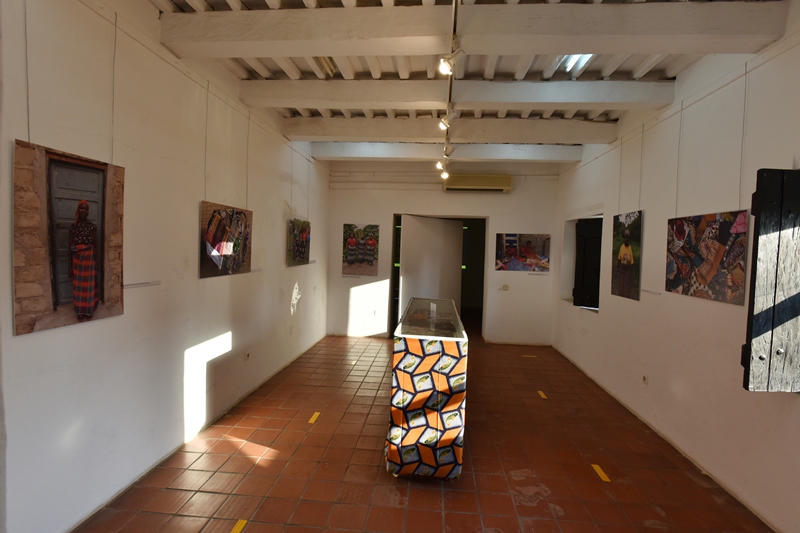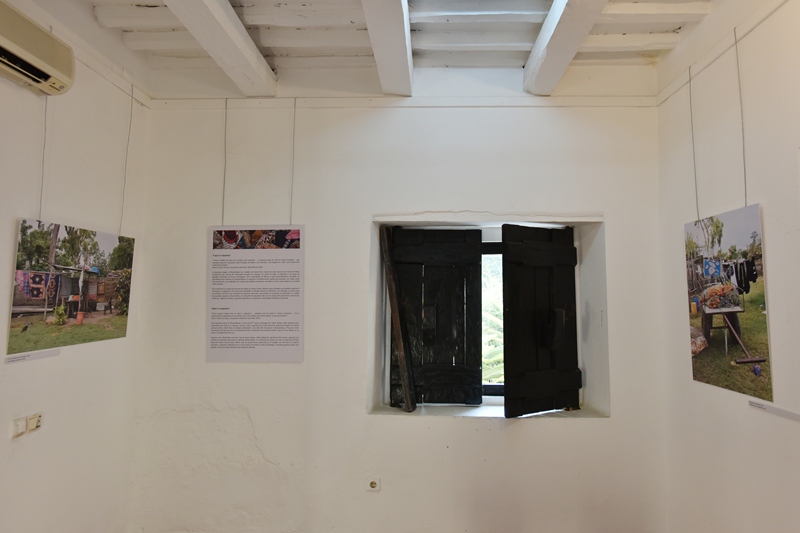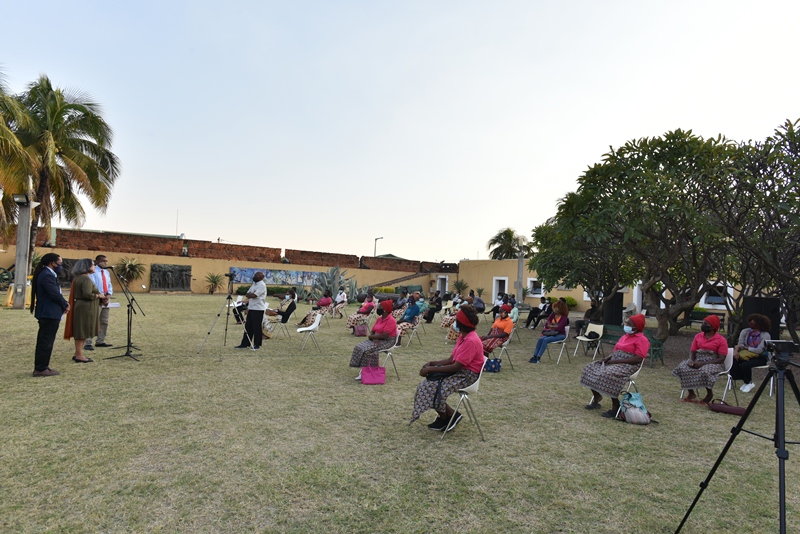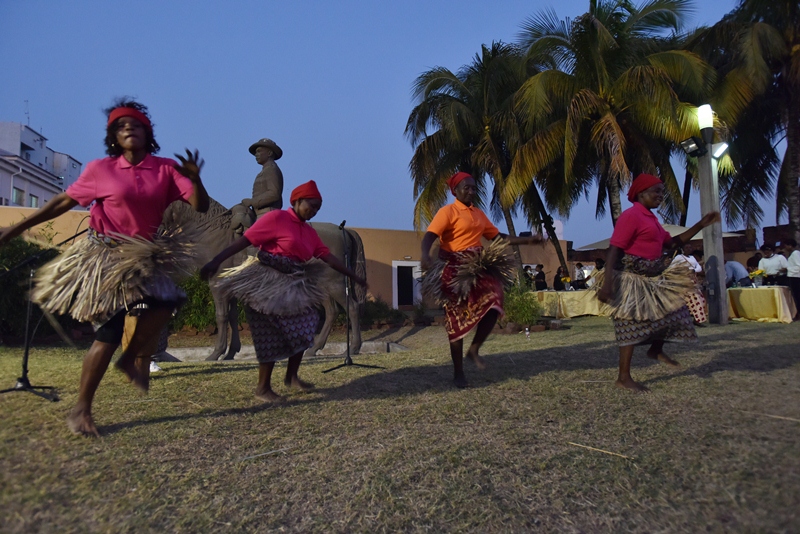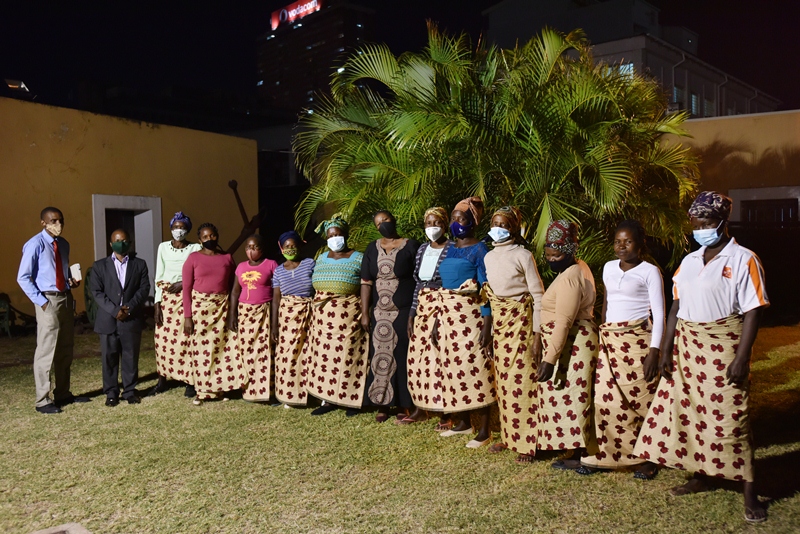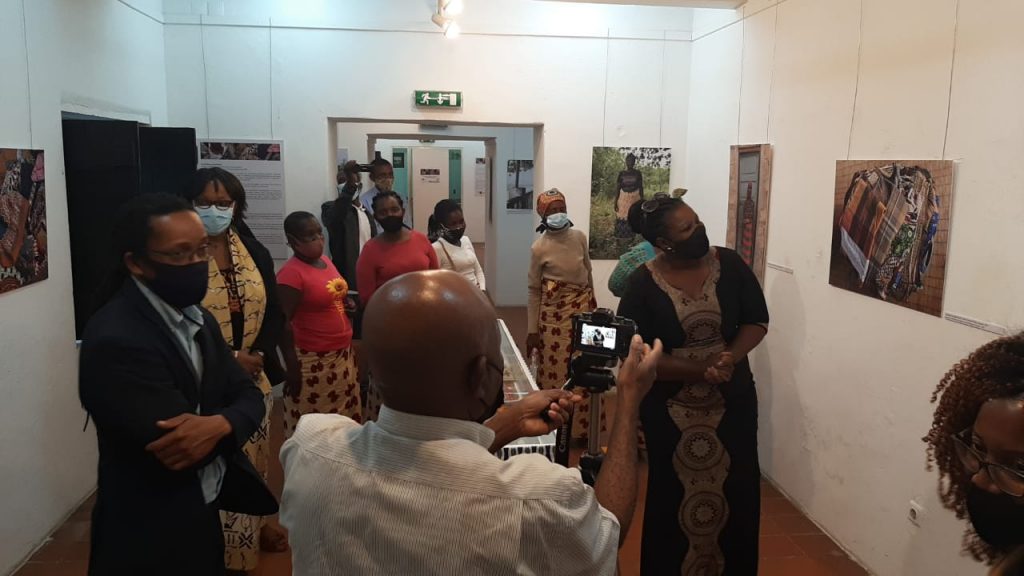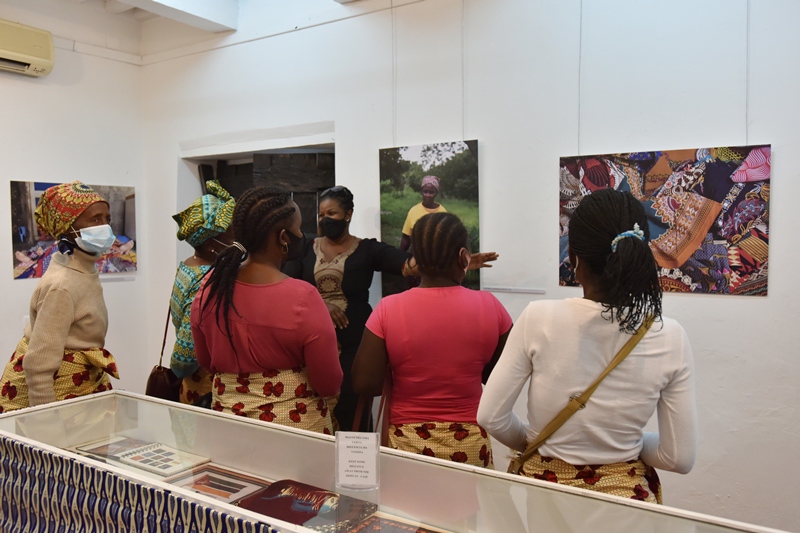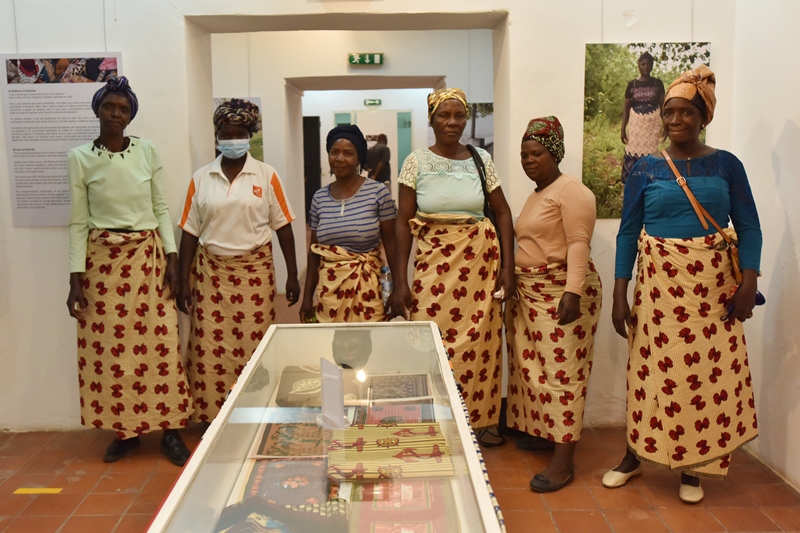A project exploring the relationship between tradition and change in the lives of women in Mozambique recently resulted in an exhibition in Maputo. Principal Investigator Sarah Worden tells us about the latest activity in this collaborative project and how focusing on the cotton printed capulana encouraged discussions around identity and cultural heritage.
For over two years I’ve been working on the ‘Women, Identity, Textiles and Heritage: Coastal Style in Mozambique’ project (WITH). Supported by the Rising from the Depths Network, the project looks at the role of material heritage amongst women in Katembe. A coastal fishing community on the south-western side of Maputo Bay, Katembe is just across the bay from the Mozambican capital city, Maputo.
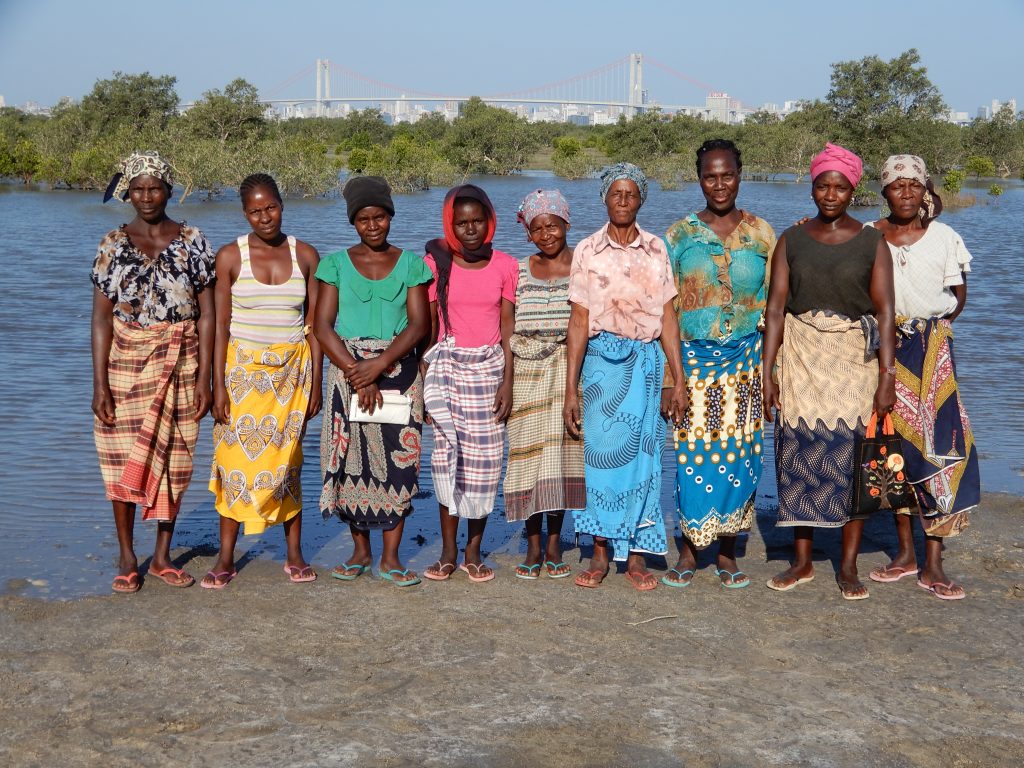
With a focus on understanding and highlighting the complex relationship between tradition and change in the lives of women in Katembe, the project uses the capulana as a lens. The capulana is a cloth worn by women throughout Mozambique. Talking about capulana provided a forum for women to discuss wider issues relating to their lives at a time of major infrastructural development around Maputo.
“I use capulana because I am a Mozambican woman!”
Dona Zena, 22 years, Mahlampfane, Katembe, November 2019
Proposed urbanisation of the area following the construction of the Maputo-Katembe Bridge in 2019 is likely to impact on the material practices and living traditions of the residents of the small fishing communities in the area. A big milestone in the WITH project is the opening of a temporary exhibition at the Fortress Museum in Maputo. The exhibition explores a specific group of women from Katembe and their discussions about life, tradition and identity.
Life by and on the sea, catching, selling and eating fish, is a source of community solidarity that spans generations in Katembe. Through a series of powerful photographs taken among the mothers, daughters, sisters and friends of Katembe, visitors are introduced to the project, the women, their coastal environment and the role of the cotton-printed capulana in their lives as an expression of identity and cultural heritage.
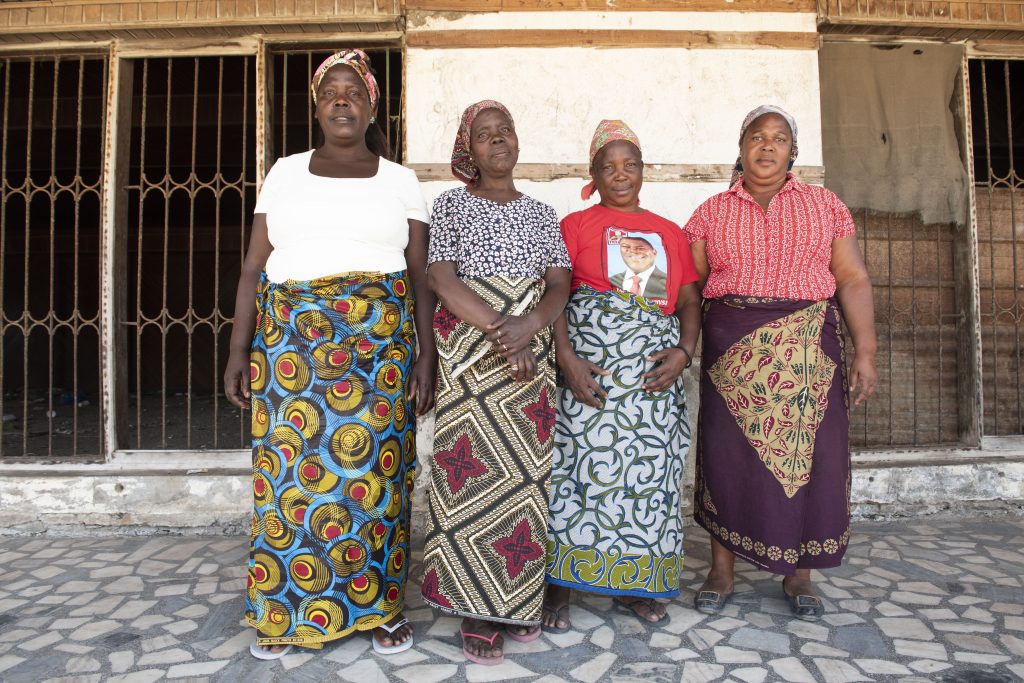
The bi-lingual text panels in Portuguese and English outline the research, emphasising the collaborative nature of this international project. A personal quote from one of the research participants relating to the significance of the capulana (like the ones in this blog) introduces each section panel.
“Every woman always has to wear a capulana…capulana can be useful in various situations…be it menstruation, pregnancy, carry a baby, go to the market, go to the hospital, in case of accident…”
Dona Cristina, 54 years, Guachene, Katembe, November 2019
Collected during the research interviews, these responses are incisive and thought-provoking and, with the images, have been selected to generate discussion and debate concerning the role of material heritage in connecting communities.
Back in March 2020, I was looking forward to travelling out with project team co-investigator John Giblin (Keeper of World Cultures) to join the team at Maputo for the installation of the exhibition. Flights were booked, visa applications processed, accommodation arranged. Mere days away from travel, the pandemic hit; our plans were put on hold.
Challenging as this was, I am delighted that over thirteen months later than planned, the exhibition opened on 28 May 2021. Sadly, we were still unable to travel to be part of the installation and opening event. As curator of the host venue, Co-Investigator Moises Timba co-ordinated the content, installation and opening of the exhibition with the rest of the Mozambican team.
COVID restrictions limited the number of invited guests at the opening event, but a fantastic range of institutions were represented, as well as artists based in Maputo. A welcome speech (including a message from me!), was delivered by Rising from the Depths Network Co-ordinator for Mozambique, Solange Macamo of the University of Eduardo Mondlane in Maputo, who has, throughout the project, provided invaluable support and guidance to the project team. A lively performance by Sekerekane, a local female dance group, rounded off the exhibition opening event.
Some of the women from the project research group also attended the opening. Project team members Emilia and Claudio were on hand to guide the group through the exhibition in which they were featured and to record their reactions to the displays. The women were wearing their matching capulana, a design selected by the group in November 2019 (a thank-you gift to the women for their participation in the project). Their presence made a powerful visual statement of the role of the capulana in group identity.
I’m looking forward to the future stages of the project, including preparing and opening a touring exhibition in Katembe itself, organised by the Fisheries Museum in Maputo, taking the project in a different format to schools and local communities later in the year. You can see more details of the project here.
Thanks to the team in Maputo (Co-Investigator Valda Marcos, Post Graduate Researchers Emilia Machaieie and Claudio Mondlate, and photographer Yassmin Fortes); Solange Macamo, (Rising from the Deep Network Co-ordinator for Mozambique). Visitors to the exhibition opening included Eduardo Mondlane University Director of Culture; Faculty of Art and Social Sciences; CECOMA (Communication centre of UEM); Ministry of Culture and Tourism (National Director of Heritage); UNESCO; Fisheries Museum (Project partner); ISARC (Higher Institute of Art & Culture, Mozambique); and Julio, DJ from the School of Communication and Art (ECA) /UEM). The exhibition opening had media interest/coverage, including Radio station SFM; CECOMA centre of communication; TVM Bom Dia Mocambique; Radio Mozambique; and Flash radio.
